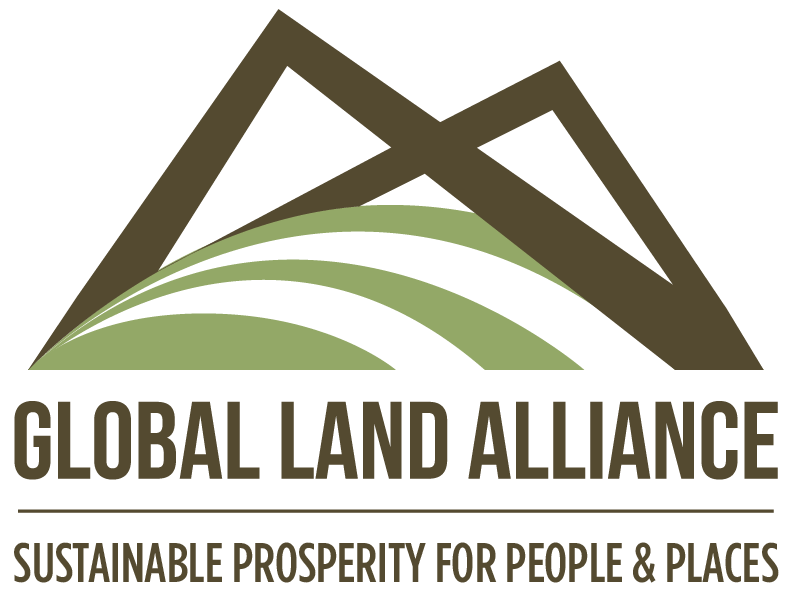ZAMBIA FOREST ACT GENDER AND YOUTHRESPONSIVE LEGAL ANALYSIS, DIALOGUES, AND CAPACITY STRENGTHENING
INITIAL LEGAL ANALYSIS AND COMPARATIVE GOOD PRACTICES MEMO RECOMMENDING LEGAL PROVISIONS FOR THE DRAFT FOREST ACT AND RELATED REGULATIONS
Women land and resource rights champions making an honorary presentation at the launch of the Women's Land and Resource Rights platform in Zambia during the 2024 Community-Based Natural Resource Management Conference in Lusaka, Zambia
The following memo was authored by Jen Duncan and Kevin Barthel as a Global Land Alliance Communication, Education and Learning (CEL) initiative and developed in consultation with the Zambia Women’s Land and Resource Rights Platform.
INTRODUCTION AND PURPOSE
Zambia’s forest resources are one of its most valuable assets. They cover over 60 percent of Zambia’s land mass (Eighth National Development Plan, p. 9), and provide livelihood support, food security, medicinal and health resources, cultural and aesthetic benefits, wildlife habitat, biodiversity, critical resources for climate change mitigation and clean air, and in recent years have been recognized globally for the value of their carbon stores. For over a decade, the Government of Zambia has worked to improve management of the forests to ensure both ecological sustainability and socially inclusive governance and benefits sharing. Through the 2015 Forest Act and ensuing regulations, the government promoted community-based forestry governance, a system that has now been in place for over ten years. During this same period, Zambia took many steps to domesticate regional and global commitments related to socially inclusive development, gender equality, sustainable forest management, biodiversity preservation, and climate-change mitigation and adaptation measures. As a result, Zambia’s policy, legal and regulatory frameworks for sustainable, socially inclusive management and use of its natural resources, including its forests, are now largely in place.
Challenges persist, however. Deforestation has continued at unsustainable levels, driven by land use conversion (both legal and illegal), agricultural encroachment and settlement expansion, mining, and continued high levels of exploitation for charcoal and fuel wood.1 While communities govern more forest area than they did a decade ago, this area should be significantly expanded, and community forestry management plans should be improved and extended. Furthermore, important questions underlie existing participatory forestry governance structures, including whether women and vulnerable groups have an equal opportunity to participate in decision-making, employment and leadership opportunities, and whether they receive an equitable share of resource benefits.
The Government of Zambia’s 2024 draft Forest Policy identifies and seeks to address many of these challenges. The stated goals of the draft policy include:
Conserve forests
Manage forests
Restore forests
Ensure a sustainable supply of ecosystem services, including both wood products (timber, wood poles, wood fuel) and non-wood products (beeswax, mushrooms, caterpillars and fruits)
Support biodiversity
Conserve soil
Stabilize stream flows and water runoff
Help regulate the global carbon cycle and clean the air through carbon sequestration
Mitigate climate change
Provide aesthetic, recreational, and cultural value
The 2024 draft Forest Policy articulates specific channels for achieving these goals, including:
Slow or halt the loss and degradation of forests through forestry research, forestry management planning, beekeeping development, plantation regulation, and enhanced delivery of forestry extension services
Increase forests under community forest management, and enhance stewardship by increasing the number of forests under community management plans
Increase private sector participation in forest resource management and value-added products
Focus on value-added products from all forests, to grow jobs, strengthen livelihood benefits, and raise GDP
Invest in forest monitoring and information management systems for better planning and decision-making
Increase the number of field-level officers like Forest Guards to improve law enforcement and compliance
Enhance institutional capacity development and improve the Forestry Department
Many of the impediments to sustainable, socially inclusive forestry management relate to the implementation of existing laws and regulations but, in some cases, as with the 2015 Forest Act, existing laws do not adequately embody Zambia’s extensive efforts to date to adopt global best practices in natural resource management and to domesticate its international commitments. For this reason, the draft 2024 Forest Policy explicitly calls for revisions to the 2015 Act.
The purpose of this memo is thus to provide legal analysis and comparative good practices supporting recommended legal provisions for revisions to the 2014 Forest Act and related regulations. The presumed goals for revisions to Zambia’s 2015 Forest Act are twofold: (1) to create an Act that aligns with Zambia’s national development priorities and its existing constitutional, policy, and legal framework, including its international commitments; and (2) to create an act that addresses existing issues and challenges regarding Zambia’s forest management and use, including both human and environmental aspects.
The memo aims to provide analysis, contextual information, and practical recommendations for consideration in revisions to the Forest Act. Section 2 provides an analysis of relevant policies, laws and regulations to consider in revising Zambia’s Forest Act. Section 3 provides contextual background, summarizing issues and challenges in the forestry sector as identified in the literature. Section 4 provides a discussion of international good practices for gender equal and socially inclusive forest-related legislation. Section 5 provides a list of priority recommendations for revisions to the Forest Act, drawing from Zambia’s policy and legal framework and international good practices. Section 6 comprises a conclusion and table of issues and recommendations for easy reference.
Read entire memo by clicking the button below:

